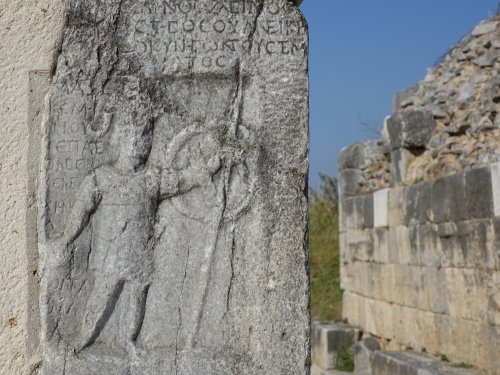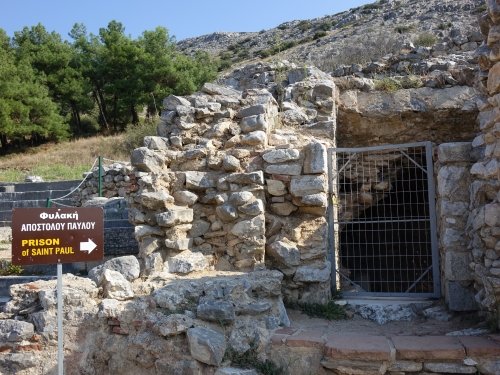Els Slots
WHS #680: Philippi
Philippi – now part of Eastern mainland Greece - developed into a strategic provincial town under Roman rule and became an early centre of Christianity. Although its remains are not up to par with the great Ancient Greek sites such as Olympia or Delphi, I found it interesting enough. With its Roman and Christian roots it has a completely different background story than the other pure Greek WHS.

I walked around the archaeological site at ease for more than 2 hours. It is a large area that consists of different sectors. The path from the eastern entrance first passes the theatre. This originally Greek theatre was transformed by the Romans into an arena for animal fights. Their descendants, the early Christians, wanted to have nothing to do with that. They put it out of use and let it perish. Nowadays it is again a recognizable theatre with rows of seats, where a theatre and music festival is held annually. Interesting reliefs and sculptures still adorn the outside of its walls.
Central to the site is an open square, the former Roman forum. Just like in the rest of Philippi there is not much of it left: the city was destroyed by an earthquake in 619, but it looks like it happened last week. All stones that have fallen are still lying on the ground. Only the contours of such structures as a row of shops can still be seen.

At the edge of the archaeological site there are two structures which are worth a look: the Octagon, an early Christian church with reasonably well-preserved mosaics. And the remains of a section of the Via Egnatia , a road built by the Romans in the 2nd century BC. The location on this road has brought Philippi many traders and pilgrims in Antiquity.
Biblical tours through this region also like to stop at Philippi. In the year 49 or 50, the apostle Paul is said to have christened the first European close to here – it was a local woman named Lydia. On his second missionary visit, he ran into a slave owner when he healed a slave from the evil eye and as a consequence she could no longer work as a fortune teller. So he was thrown in jail. A miracle follows “They and the other prisoners, however, are soon freed due to a miracle. An earthquake occurs that causes Paul's cell door to open and his bonds to loosen up. This not only happens to him but to ALL those within the prison.” (1) This prison cell is, according to reports or belief, still preserved and can be seen at the archaeological site.

A few practical notes to conclude: I left my (recommended) overnight stop of Kavala for Krinides (the modern town where these excavations are located) at 9 am. Buses seem to run every hour on the hour, also on Sundays. The return bus from Krinides leaves a bit past the half hour. At the Philippi Archaeological Site, I was the first visitor of the day and they did not have change from 20 EUR yet to pay for the 6 EUR entry fee – but fortunately they did have a credit card machine. When I finished my tour of the site I found the café-restaurant that lies next to it totally overrun with what seemed to be local visitors.
More on
Els SlotsComments
No comments yet.
